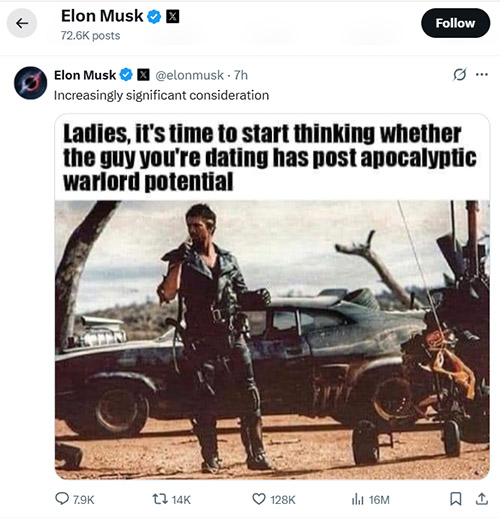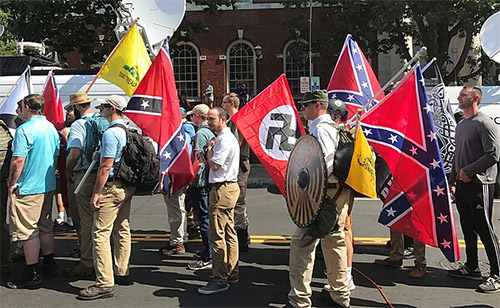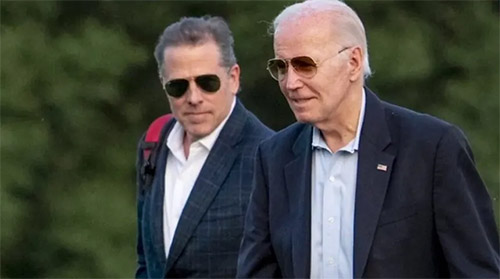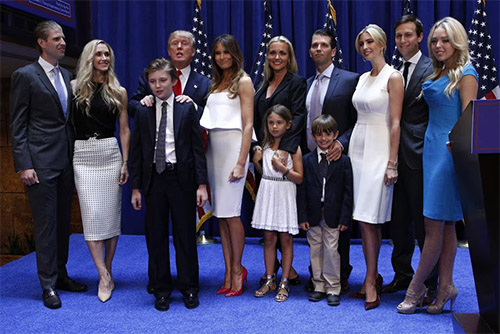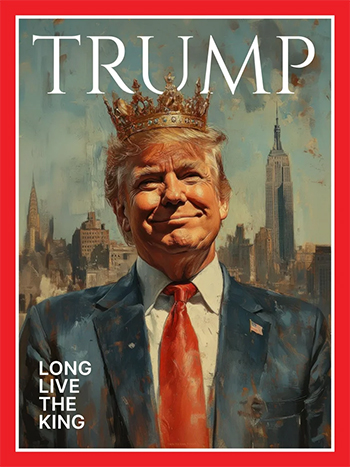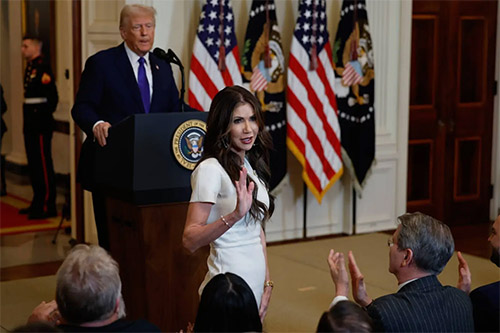B. Preliminary Injunction
While they differ in duration, temporary restraining orders and preliminary injunctions are subject to the same substantive legal standards. See, e.g., Singh v. Carter, 168 F. Supp. 3d 216, 223 (D.D.C. 2016). Courts may either grant a preliminary injunction pursuant to Federal Rule of Civil Procedure 65(c) or, in APA cases, may “issue all necessary and appropriate process to . . . preserve status or rights pending conclusion of the review proceedings” when doing so is “necessary to prevent irreparable injury.” 5 U.S.C. § 705. Both provisions provide a mechanism for issuing injunctive relief and operate under the same four-factor test. District of Columbia v. U.S. Dep’t of Agric., 444 F. Supp. 3d 1, 15 (D.D.C. 2020).
To obtain a preliminary injunction, “the moving party must show (1) a substantial likelihood of success on the merits, (2) that it would suffer irreparable injury if the injunction were not granted, (3) that an injunction would not substantially injure other interested parties, and (4) that the public interest would be furthered by the injunction.” Chaplaincy of Full Gospel Churches v. England, 454 F.3d 290, 297 (D.C. Cir. 2006).
These four considerations are factors, not elements. “A district court must ‘balance the strengths of the requesting party’s arguments in each of the four required areas.’” Id. (quoting CityFed Fin. Corp. v. Off. of Thrift Supervision, 58 F.3d 738, 747 (D.C. Cir. 1995)). When a government entity is a party to the case, the third and fourth factors merge. Pursuing Am.’s Greatness v. Fed. Election Comm’n, 831 F.3d 500, 511 (D.C. Cir. 2016).
Prior to the Supreme Court’s decision in Winter v. Natural Resources Defense Council, Inc., 555 U.S. 7 (2008), courts in this Circuit tended to employ a “sliding scale” method in which “a strong showing on one factor could make up for a weaker showing on another.” Sherley v. Sebelius, 644 F.3d 388, 392 (D.C. Cir. 2011). While the D.C. Circuit has considered abandoning the sliding-scale method for one that treats the substantial likelihood prong as “an independent, free-standing requirement,” id. at 393, it has yet to decide one way or the other, see Changji Esquel Textile Co. v. Raimondo, 40 F.4th 716, 726 (D.C. Cir. 2022). At the very least, however, the plaintiff must present a “serious legal question on the merits.” Raimondo, 40 F.4th at 726 (quoting Sherley, 644 F.3d at 398). Given the ambiguity with respect to the sliding-scale approach, the court will consider all factors and delve into their relative weight only if it would affect the outcome. See Costa, 456 F. Supp. 3d at 133.
1. Likelihood of Success on the Merits
On the merits, Defendants largely repeat the same arguments they made at the TRO stage. See ECF No. 47, at 14-16 (final agency action), 25-31 (arbitrary and capricious), 31-34 (statutory authority), 34-36 (First Amendment). The court begins by addressing OMB’s guidance document, which the parties discussed at length in their preliminary injunction briefing and at oral argument. See ECF No. 47, at 20-25; ECF No. 49, at 4-6; Prelim. Inj. Hr’g, at 6:19-9:14, 29:21-32:24, Nat’l Council of Nonprofits, No. 25-CV-239 (D.D.C. Feb. 20, 2025). It then turns to final agency action, followed by the substantive merits of Plaintiffs’ three claims.
a. The role of the OMB Guidance
Defendants spill considerable ink about OMB’s issuance of a guidance document, ECF No. 11-1 (“OMB Guidance Document”), which supposedly limited the scope of the OMB Pause Memorandum, see ECF No. 47, at 20-25. They assert that the original memorandum, when read in tandem with the OMB Guidance Document, stops short of unlawful agency action. Id. at 21 (noting the OMB Guidance Document’s statement that “the pause does not apply across-the-board” and “is expressly limited to programs, projects, and activities implicated by the President’s Executive Orders”). This argument sounds persuasive in theory but clashes with how Defendants’ directives were actually written and implemented.
As an initial matter, the language of the OMB Guidance Document appears to contradict that of the original memorandum. The guidance document sought to carve out numerous programs and portray the initial command as much more limited, but the original memorandum mandated (in bold typeface, no less) that all federal agencies “must temporarily pause all activities related to [the] obligation or disbursement of all Federal financial assistance.” OMB Pause Memorandum. It also required agencies to stop the “disbursement of Federal funds under all open awards.” Id. 26 (emphasis added). As the court explained previously, supra Part II.A.2.a, this language conveyed a clear directive to implement a blanket pause of federal financial assistance. That flatly contravenes the OMB Guidance Document’s pronouncement that the pause “d[id] not apply across-the-board.” OMB Guidance Document, at 1.
Furthermore, regardless of how Defendants would have liked their guidance to apply, that is a far cry from how it was administered in practice. As far as the parties and this court are aware, the guidance was issued at some point on January 28 (the same day the funding freeze was to take effect). Plaintiffs only received a copy of the guidance around 1:30 p.m., see ECF No. 11, at 2, and even Defendants did not know exactly when it was originally issued or distributed to federal agencies, Tr. of Prelim. Inj. Hr’g, at 25:5-9, Nat’l Council of Nonprofits, No. 25-CV-239 (Feb. 20, 2025). Under the most generous viewing of the case’s chronology, agencies had maybe four hours (but probably fewer) to actualize the OMB Guidance Document. Clearly, that was not enough time.9 Agencies still implemented the original memorandum as written. For example, despite the guidance’s attempt to carve out “program[s] that provide[] direct benefits to individuals,” OMB Guidance Document, at 1, financial assistance for such programs was still suspended, see ECF Nos. 24-5 ¶¶ 14-16; 27-1 ¶¶ 4-5. The guidance also exempted “[f]unds for small businesses” and “Head Start” payments, OMB Guidance Document, at 2, but those fell victim to the freeze, too, see ECF Nos. 24-3, at 74; 24-6. Defendants cannot rely on the OMB Guidance Document as a saving grace when it had virtually no effect on the ground.
This theme—that Plaintiffs are trying to enjoin a far-reaching version of the OMB Pause Memorandum that never existed—pervades all of Defendants’ briefing and argument. See ECF No. 47, at 10 (mootness), 13 (causation), 20-25 (role of the OMB Guidance Document); 27 (arbitrary and capricious). But Defendants cannot take a memorandum that was drafted broadly, interpreted expansively, and implemented categorically and fault Plaintiffs for “overreading” that directive.
b. Final agency action
Defendants, now joined by Amicus, again dispute whether the OMB Pause Memorandum was final agency action. Like before, the court is unpersuaded.
Finality is a prerequisite to the judicial review of an APA claim. See 5 U.S.C. § 704. Agency actions, as a general matter, must be “circumscribed [and] discrete.” Norton v. S. Utah Wilderness All., 542 U.S. 55, 62 (2004). Final agency action, in particular, “must mark the consummation of the agency’s decisionmaking process” and determine “rights or obligations . . . from which legal consequences will flow.” Bennett v. Spear, 520 U.S. 154, 177-78 (1997) (internal quotation marks omitted) (first quoting Chicago & S. Air Lines, Inc. v. Waterman S.S. Corp., 333 U.S. 103, 113 (1948), then quoting Port of Boston Marine Terminal Ass’n v. Rederiaktiebolaget Transatlantic, 400 U.S. 62, 71 (1970)). The APA does not, for example, allow a court to review an agency’s “day-to-day operations.” Lujan v. Nat’l Wildlife Fed’n, 497 U.S. 871, 899 (1990).
Echoing points from their causation argument, Defendants claim that any instruction from OMB could not have been final because it was the individual agencies that carried out the funding freeze. To the extent this repeats the causation analysis, the court has already addressed it. See supra Part II.A.1.b.
Defendants and Amicus further accuse Plaintiffs of improperly advancing a “‘broad programmatic attack’ on an agency’s operations” by targeting a policy “consisting [principally] of . . . many individual actions.” ECF No. 48, at 5 (second alteration in original) (first quoting Norton, 542 U.S. at 64, then quoting Nat’l Wildlife Fed’n, 497 U.S. at 892-93); see ECF No. 47, at 15-16. But Plaintiffs only challenge one specific act by OMB: ordering a nationwide pause on federal financial assistance. And, as explained, supra Part II.B.1.a, Defendants and Amicus cannot rely on a theoretical version or application of OMB’s directives. The initial memorandum was drafted and interpreted broadly in accordance with its text, and what little clarity the guidance offered—if any—came far too late. As the court explained in its earlier opinion, the OMB Pause Memorandum issued a mandatory command to other federal agencies that produced legal consequences for Plaintiffs and others. See ECF No. 30, at 21-23.
c. Arbitrary and capricious
Under the APA, a court must “hold unlawful and set aside agency action, findings, and conclusions” that are “arbitrary, capricious, an abuse of discretion, or otherwise not in accordance with law.” 5 U.S.C. § 706(2)(A). “The scope of review under the ‘arbitrary and capricious’ standard is narrow and a court is not to substitute its judgment for that of the agency.” Motor Vehicle Mfrs. Ass’n of the U.S., Inc. v. State Farm Mut. Auto. Ins. Co., 463 U.S. 29, 43 (1983). To pass muster, the agency “must examine the relevant data and articulate a satisfactory explanation for its action[,] including a ‘rational connection between the facts found and the choice made.’” Id. (quoting Burlington Truck Lines v. United States, 371 U.S. 156, 168 (1962)). Agency action is generally deemed unlawful if it “has relied on factors which Congress has not intended it to consider, entirely failed to consider an important aspect of the problem, offered an explanation for its decision that runs counter to the evidence before the agency, or is so implausible that it could not be ascribed to a difference in view or the product of agency expertise.” Id.
The arbitrary-and-capricious review at this stage of the litigation remains largely unchanged from the court’s earlier opinion. The touchstone of this inquiry is rationality, and Defendants’ actions flunk that test. Defendants still cannot provide a reasonable explanation for why they needed to freeze all federal financial assistance in less than a day to “safeguard valuable taxpayer resources.” OMB Pause Memorandum, at 1. Evaluating funding priorities can be done without needing to starve citizens or deny critical health services. See, e.g., ECF Nos. 24-4 ¶ 6; 24-11 ¶¶ 6-7. The potential $3 trillion in financial assistance implicated by the freeze is a “breathtakingly large sum of money to suspend practically overnight.” ECF No. 30, at 24. And “[r]ather than taking a measured approach to identify purportedly wasteful spending, Defendants cut the fuel supply to a vast, complicated, nationwide machine—seemingly without any consideration for the consequences of that decision.” Id. Doing so was not—and could never be—rational, especially when the decision was made without grappling with its catastrophic effects or the logistical nightmare of its implementation.10 See Bus. Roundtable v. Sec. & Exch. Comm’n, 647 F.3d 1144, 1148 (D.C. Cir. 2011) (explaining that an agency’s failure to “apprise itself . . . of the economic consequences” of potential action is “arbitrary and capricious and not in accordance with law” (quoting Chamber of Com. of the U.S. v. Sec. & Exch. Comm’n, 412 F.3d 133, 144 (D.C. Cir. 2005))). Defendants essentially adopted a “freeze first, ask questions later” approach that “entirely failed to consider [multiple] important aspect[s] of the problem.” Motor Vehicle Mfrs. Ass’n, 463 U.S. at 43.11
Defendants also ignored significant reliance interests. Plaintiffs—who only challenge the pausing of already allocated funds—produced substantial evidence that numerous organizations need consistent disbursements of funds to even operate. Missing a single payment could require immediate firings or the discontinuation of entire programs. See ECF Nos. 24-4 ¶¶ 4, 6; 24-5 ¶ 13. When an agency suddenly changes course, it must recognize “that longstanding policies may have engendered serious reliance interests that must be taken into account.” Dep’t of Homeland Sec. v. Regents of the Univ. of Cal., 591 U.S. 1, 30 (2020) (internal quotation marks omitted) (quoting Encino Motorcars, LLC v. Navarro, 579 U.S. 211, 221-22 (2016)). Defendants entirely failed to do so.
In the simplest terms, the freeze was ill-conceived from the beginning. Defendants either wanted to pause up to $3 trillion in federal spending practically overnight, or they expected each federal agency to review every single one of its grants, loans, and funds for compliance in less than twenty-four hours. The breadth of that command is almost unfathomable. See ECF No. 30, at 17 (“[ i]t is unclear whether twenty-four hours is sufficient time for an agency to independently review a single grant, let alone hundreds of thousands of them.”). Either way, Defendants’ actions were irrational, imprudent, and precipitated a nationwide crisis. Plaintiffs have therefore shown a likelihood of success on their arbitrary and capricious claim.
d. Excess of statutory authority
Plaintiffs’ second claim argues that Defendants dramatically overstepped the bounds of their legal authority in ordering a nationwide funding freeze.12 Agencies “are creatures of statute” and are therefore subject to the limits prescribed by Congress. Nat’l Fed’n of Indep. Bus. v. Dep’t of Lab., Occupational Safety & Health Admin., 595 U.S. 109, 117 (2022) (“OSHA”). In other words, they “‘literally ha[ve] no power to act’ except to the extent Congress [has] authorized.” Marin Audubon Soc’y v. Fed. Aviation Admin., 121 F.4th 902, 912 (D.C. Cir. 2024) (first alteration in original) (quoting Fed. Election Comm’n v. Ted Cruz for Senate, 596 U.S. 289, 301 (2022)). If an agency exceeds that power, the court must set aside its action under the APA. See 5 U.S.C. § 706(2)(C).
OMB’s organic statute is 31 U.S.C. § 503. Within it, Defendants primarily rely on subsections (a)(2) and (a)(5), but neither appears to grant the expansive authority that OMB tried to exercise here. Under subsection (a)(2), OMB may “[p]rovide overall direction and leadership to the executive branch on financial management matters by establishing financial management policies and requirements.” Id. § 503(a)(2). But providing overall direction and establishing financial management policies do not clearly confer the power to halt all finances, full-stop, on a moment’s notice. Indeed, the structure and provisions of Section 503 strongly suggest that OMB occupies an oversight role. Defendants have not pointed to specific authority that allows it to unilaterally pull the plug on nearly all federal monetary flows.
Subsection (a)(5) further indicates that OMB’s role is mainly supervisory, rather than directly active. That subsection permits OMB to “monitor the financial execution of the budget in relation to actual expenditures.” Id. § 503(a)(5). Such language falls well short of actively deciding whether agencies “must temporarily pause” all federal financial assistance. Defendants cannot convincingly argue that “monitor” rises to that level of affirmative control. See Monitor, The Oxford English Dictionary (2d ed. 1989) (defining “monitor” as “to observe, supervise, or keep under review”).
When an agency seeks to “exercise powers of vast economic and political significance,” the “sheer scope of [an agency]’s claimed authority” can trigger heightened judicial scrutiny. Ala. Ass’n of Realtors v. Dep’t of Health & Hum. Servs., 594 U.S. 758, 764 (2021) (per curiam) (internal quotation marks omitted) (quoting Util. Air Regul. Grp. v. EPA, 573 U.S. 302, 324 (2014)). In such situations, the court “expect[s] Congress to speak clearly” when conferring such authority. OSHA, 595 U.S. at 117 (quoting Ala. Ass’n of Realtors, 594 U.S. at 764). The Supreme Court has referred to this principle as the “major questions doctrine.” Id. at 122 (Gorsuch, J., concurring). Based on the cases in which the Supreme Court has invoked the doctrine, this case easily qualifies. See Ala. Ass’n of Realtors, 594 U.S. at 764 (applying the doctrine where the Centers for Disease Control and Prevention implemented a nationwide eviction moratorium affecting up to 17 million tenants); OSHA, 595 U.S. at 117-18 (applying the doctrine where OSHA required all federal employees to obtain COVID-19 vaccinations).
“When an agency claims to discover in a long-extant statute an unheralded power to regulate ‘a significant portion of the American economy,’” the court “typically greet[s] its announcement with a measure of skepticism.” Util. Air Regul. Auth. Grp., 573 U.S. at 324 (quoting FDA v. Brown & Williamson Tobacco Corp., 529 U.S. 120, 159 (2000)). Here, Defendants attempted to freeze as much as $3 trillion dollars—the sum total of “all activities related to [the] obligation or disbursement of all Federal financial assistance.” OMB Pause Memorandum, at 2. That is “no everyday exercise of federal power.” OSHA, 595 U.S. at 117 (internal quotation marks omitted) (quoting In re MCP No. 165, Occupational Safety & Health Admin., 20 F.4th 264, 272 (6th Cir. 2021) (Sutton, C.J., dissenting)).
The scope of power OMB seeks to claim is “breathtaking,” and its ramifications are massive. Ala. Ass’n of Realtors, 594 U.S. at 764. Because there is no clear statutory hook for this broad assertion of power, Plaintiffs are likely to succeed on the merits of this claim.
e. First Amendment
Plaintiffs’ third claim alleges that Defendants are “threaten[ing] [the] continued receipt of federal financial assistance based explicitly on [the recipients’] exercise of their core First Amendment rights of speech and association.” ECF No. 40, at 26. Defendants counter that the government may “selectively fund a program to encourage certain activities” without simultaneously “funding an alternative program [that] deal[s] with the problem in another way.” ECF No. 47, at 34 (quoting Rust v. Sullivan, 500 U.S. 173, 193 (1991)). Defendants are correct that the government “is not required to subsidize First Amendment rights,” Leathers v. Medlock, 499 U.S. 439, 450 (1991), or “assist others in funding the expression of particular ideas,” Ysursa v. Pocatello Educ. Ass’n, 555 U.S. 353, 358 (2009). And refusing to pay for certain speech generally does not inflict a First Amendment harm. See Rust, 500 U.S. at 193.
What is less clear, however, is whether the government may deliberately withhold funds that have already been earmarked for certain recipients based exclusively on the recipient’s viewpoints. Rust and similar decisions by the Supreme Court “are grounded in the notion that the ‘Due Process Clauses generally confer no affirmative right to governmental aid.’” J.D. v. Azar, 925 F.3d 1291, 1327 (D.C. Cir. 2019) (quoting Webster v. Reprod. Health Servs., 492 U.S. 490, 507 (1989)). But that calculus could change if individuals or organizations have already been awarded certain funds and grants—as is the case with Plaintiffs’ members here. If Defendants were to unfreeze promised funds only to organizations expressing one view, but not to organizations expressing the opposite view, that could raise First Amendment concerns.
Additionally, the Supreme Court has held that the government “may not deny a benefit to a person on a basis that infringes his constitutionally protected . . . freedom of speech[,] even if he has no entitlement to that benefit.” Agency for Int’l Dev. v. All. for Open Soc’y Int’l, Inc., 570 U.S. 205, 214 (2013) (“USAID”) (emphasis added) (quoting Rumsfeld v. F. for Acad. & Institutional Rights, 547 U.S. 47, 59 (2006)). It has also made clear that the government cannot “leverage funding to regulate speech outside the contours of the [funding] program itself.” Id. at 214-15 (emphasis added). In other words, when the government exerts First Amendment pressures that have nothing to do with the actual financial assistance program, that can be a constitutional violation. Plaintiffs rely on that principle here. Defendants respond by arguing that the OMB Pause Memorandum is solely framed around “focusing taxpayer dollars” and “[t]he use of federal resources,” rather than governing speech beyond the scope of federal financial assistance. ECF No. 47, at 34-35 (alteration in original) (citing OMB Pause Memorandum, at 1).
While the answer is not obvious at this early stage, Plaintiffs have shown some likelihood of success on their First Amendment claim. The Supreme Court has remarked that the line between proper subsidization and improper coercion “is hardly clear . . . because the definition of a particular program can always be manipulated to subsume the challenged condition.” USAID, 570 U.S. at 215. That said, the government “cannot recast a condition on funding as a mere definition of its program in every case, lest the First Amendment be reduced to a simple semantic exercise.” Id. (quoting Legal Servs. Corp. v. Velazquez, 531 U.S. 533, 547 (2001)). The OMB Pause Memorandum made several policy statements that are hostile to concepts like “Marxist equity,” “transgenderism,” and “woke gender ideology.” OMB Memorandum, at 2. It also instructed federal agencies to pause all disbursements that could be connected to these ill-defined categories. Id. There is no indication that expressing viewpoints on these issues (or being associated with them at all) is in any way tied to the “contours of the [funding] program[s] [themselves].” USAID, 570 U.S. at 214-15.
The government “may not ‘aim at the suppression of dangerous ideas’” or “manipulate[]” a subsidy “to have a coercive effect.” Nat’l Endowment for the Arts v. Finley, 524 U.S. 569, 587 (1998) (brackets omitted) (first quoting Regan v. Tax’n Without Representation of Wash., 461 U.S. 540, 550 (1983), then quoting Ark. Writers’ Project, Inc. v. Ragland, 481 U.S. 221, 237 (1987) (Scalia, J., dissenting)). By appearing to target specific recipients because they associate with certain ideas, Defendants may be crossing a constitutional line.
2. Irreparable Harm
While irreparable injury is “a high standard,” England, 454 F.3d at 297, the court’s analysis of this factor remains unchanged from the TRO stage. Defendants have not introduced arguments or evidence sufficient to undercut Plaintiffs’ strong showing of irreparable harm.
To qualify for injunctive relief, the alleged injury “must be both certain and great,” “actual and not theoretical,” and “of such imminence that there is a ‘clear and present’ need for equitable relief.” Id. (quoting Wis. Gas Co. v. Fed. Energy Regul. Comm’n, 758 F.2d 669, 674 (D.C. Cir. 1985) (per curiam)). It must also “be beyond remediation,” meaning that “[t]he possibility [of] adequate compensatory or other corrective relief . . . at a later date . . . weighs heavily against a claim of irreparable harm.” Id. at 297-98 (quoting Wis. Gas Co., 758 F.2d at 674).
Here, Plaintiffs have produced significant evidence that a pause on federal funding will “threaten[] the very existence of [their members’] business.” Wis. Gas Co., 758 F.2d at 674. A freeze will not simply inconvenience them, it will devastate them. The court recounts its findings from before, which still hold true today:
If the freeze were to remain in effect [or recur], Plaintiffs’ members will suffer “existential injuries” and some programs may “simply disappear.” ECF No. 5-1, at 12. Their workers may be unable to pay for housing or food. ECF No. 24-4 ¶ 7 (“A lot of our staff live paycheck to paycheck, and if they can’t get paid, then they are unable to pay rent or buy groceries.”). Some have already been forced to “shutter [their] programs” just to make payroll. ECF No. 24-7 ¶¶ 20-21. And patients or customers that rely on their services may be denied care when it is most needed. ECF Nos. 24-4 ¶ 16; 24-5 ¶ 21. For some, these are harms for which “there can be no do over and no redress.” Newby, 838 F.3d at 9 (quoting League of Women Voters of N.C. v. North Carolina, 769 F.3d 224, 247 (4th Cir. 2014)); see ECF No. 24-4 ¶ 7 (“[ I]f my Health Center loses physicians, dentist, or nurse practitioners, then it will be virtually impossible to recruit replacements to a rural Health System that is suddenly an unreliable source of income.”).
ECF No. 30, at 27.
While funds have resumed flowing to some recipients, that does not erase the imminence or irreparability of what another pause would entail. As at least one declarant explained, the resumption of funding “came in under the wire: had it been one day later, we would not have been able to make payroll on Friday, February 7.” ECF No. 40-3 ¶ 4. As discussed previously, all of these organizations rely on continued funding in order to keep their doors open.
The fact that organizations have been able to draw down funds in the immediate aftermath of the court’s TRO means nothing if the spigot is shut off again. The injunctive relief that Defendants fought so hard to deny is the only thing in this case holding potentially catastrophic harm at bay.13 The court’s previous order may have bought Plaintiffs a few additional weeks of funding, but they remain just as vulnerable as they were in the first week of February. A single disbursement does not protect a recipient when the next disbursement is equally as vital. Plaintiffs have easily shown irreparable harm.
3. Balance of the Equities and the Public Interest
As is the case with irreparable harm, the balance of the equities and the public interest continue to weigh heavily in favor of injunctive relief. “Plaintiffs paint[ed] a stark picture of nationwide panic in the wake of the funding freeze.” ECF No. 30, at 28. Nonprofits and organizations across the country were left adrift as they scrambled to make sense of the memorandum and its effects. See ECF Nos. 24-4, 24-5, 24-6, 24-7, 24-8, 24-9, 24-10, 24-11. Entire funding portals were taken offline with no rhyme or reason, generating significant confusion and fear. See ECF Nos. 24-8 ¶¶ 8-9; 24-6 ¶ 15; 24-7 ¶ 13; 24-8 ¶ 9. Many organizations had to resort to desperate measures just to stay operational. The pause placed critical programs for children, the elderly, and everyone in between in serious jeopardy. Because the public’s interest in not having trillions of dollars arbitrarily frozen cannot be overstated, Plaintiffs have more than met their burden here.
4. Bond
Federal Rule of Civil Procedure 65(c) states that the court may issue a TRO or preliminary injunction “only if the movant gives security in an amount that the court considers proper to pay the costs and damages sustained by any party found to have been wrongfully enjoined or restrained.” Here, Defendants ask the court to require Plaintiffs to “post a bond commensurate with the scope of the relief ordered.” ECF No. 47, at 44-45. The court declines. Rule 65(c) “has been read to vest broad discretion in the district court to determine the appropriate amount of an injunction bond,” DSE, Inc. v. United States, 169 F.3d 21, 33 (D.C. Cir. 1999), “including the discretion to require no bond at all,” P.J.E.S. ex rel. Escobar Francisco v. Wolf, 502 F. Supp. 3d 492, 520 (D.D.C. 2020) (quoting Simms v. District of Columbia, 872 F. Supp. 2d 90, 107 (D.D.C. 2012)). A bond “is not necessary where requiring [one] would have the effect of denying the plaintiffs their right to judicial review of administrative action.” Nat. Res. Def. Council, Inc. v. Morton, 337 F. Supp. 167, 168 (D.D.C. 1971) (collecting cases); cf. Nat’l Ass’n of Diversity Officers in Higher Educ. v. Trump, No. 25-CV-333, 2025 WL 573764, at *29 (D. Md. Feb. 21, 2025) (setting a nominal bond of zero dollars because granting the defendants’ request “would essentially forestall [the] [p]laintiffs’ access to judicial review”). In a case where the government is alleged to have unlawfully withheld trillions of dollars of previously committed funds to countless recipients, it would defy logic—and contravene the very basis of this opinion—to hold Plaintiffs hostage for the resulting harm. That is especially so when Defendants—OMB and its director—will personally face no monetary injury from the injunction.14
III. CONCLUSION
For the foregoing reasons, the court will enter a preliminary injunction. A separate order will issue.
LOREN L. ALIKHAN
United States District Judge
Date: February 25, 2025
**********
UNITED STATES DISTRICT COURT
FOR THE DISTRICT OF COLUMBIA
NATIONAL COUNCIL OF NONPROFITS, et al.,
Plaintiffs,
v.
OFFICE OF MANAGEMENT AND BUDGET, et al.,
Defendants.
Civil Action No. 25 - 239 (LLA)
ORDER
For the reasons stated in the accompanying Memorandum Opinion, it is hereby
ORDERED that Plaintiffs’ Motion for a Preliminary Injunction, ECF No. 40, is GRANTED to the extent that it is
ORDERED that Defendants are enjoined from implementing, giving effect to, or reinstating under a different name the unilateral, non-individualized directives in OMB Memorandum M-25-13 with respect to the disbursement of Federal funds under all open awards; it is further
ORDERED that Defendants must provide written notice of the court’s preliminary injunction to all agencies to which OMB Memorandum M-25-13 was addressed. The written notice shall instruct those agencies that they may not take any steps to implement, give effect to, or reinstate under a different name the unilateral, non-individualized directives in OMB Memorandum M-25-13 with respect to the disbursement of Federal Funds under all open awards. It shall also instruct those agencies to continue releasing any disbursements on open awards that were paused due to OMB Memorandum M-25-13; it is further
ORDERED that this Order shall apply to the maximum extent provided for by Federal Rule of Civil Procedure 65(d)(2) and 5 U.S.C. §§ 705 and 706; it is further
ORDERED that Defendants shall file a status report on or before February 28, 2025, apprising the court of the status of their compliance with this Order, including by providing a copy of the written notice described above; it is further
ORDERED that the parties shall meet and confer and file a joint status report proposing next steps in this proceeding on or before February 28, 2025; and it is further
ORDERED that Beatrice Adams’s Motion to Intervene, ECF No. 19, is DENIED.
SO ORDERED.
LOREN L. ALIKHAN
United States District Judge
Date: February 25, 2025
_______________
Notes:
1 Although Plaintiffs originally named then-Acting Director of the Office of Management and Budget Matthew Vaeth as a defendant, Russell Vought—who was confirmed by the Senate on February 6, 2025—“is automatically substituted as a party” in Mr. Vaeth’s place pursuant to Federal Rule of Civil Procedure 25(d).
2 The memorandum included a footnote stating: “Nothing in this memo should be construed to impact Medicare or Social Security benefits.” OMB Pause Memorandum, at 1 n.2.
3 The court issued the administrative stay from the bench shortly before the “temporary pause” of federal funding was set to take effect at 5:00 p.m. Tr. of Emergency Hr’g, at 23:21-24:5, Nat’l Council of Nonprofits, No. 25-CV-239 (D.D.C. Jan. 28, 2025).
4 The same day, Beatrice Adams moved to intervene on behalf of herself and all others similarly situated. ECF No. 19. She sought to dissolve the court’s then-active administrative stay, arguing that child-welfare funding was being used to “facilitate the separation of children from loving homes.” Id. at 3-4. Both parties oppose Ms. Adams’s intervention. ECF Nos. 41, 42. The court will deny Ms. Adams’s motion. To the extent she only seeks to challenge the administrative stay, Ms. Adams’s motion to intervene is now moot. In any event, Ms. Adams’s claims are too factually and legally attenuated from those alleged in Plaintiffs’ complaint, and Defendants are “already adequately representing the Government’s interests in ensuring that all federal funding is administered appropriately.” ECF No. 42, at 1.
5 While the court did not fully address Plaintiffs’ other two claims (that Defendants’ actions were in excess of statutory authority and violated the First Amendment), it noted that they had shown at least some likelihood of success on both. ECF No. 30, at 20 n.6.
6 In the interim, on February 14, the American Center for Law and Justice filed an amicus brief in support of Defendants. ECF No. 46.
7 Amicus American Center for Law and Justice echoes Defendants’ mootness argument, claiming that “none of [Plaintiffs’] desired terms of the Prayer for Relief can be implemented [because] there is no OMB Memo that can be enjoined, restrained, or vacated.” ECF No. 48, at 3. The court has already rejected this argument. To the extent that Plaintiffs’ prayer for relief is limited only to the memorandum, they have shown that the rescission had no real effect on Defendants’ actions. For days after the memorandum purportedly ceased to exist, agencies continued to withhold funds pursuant to its authority. See ECF No. 24-1, at 7. If Amicus were correct, a government agency could order illegal activity, retract that order in name only while continuing to implement its substance, and escape legal liability. The court refuses to ratify such behavior. Amicus goes on to argue that “Plaintiffs cannot use a Complaint directed against the OMB Memo as a basis for obtaining relief against all pauses of whatever basis,” ECF No. 48, at 5, but this misconstrues the requested injunctive relief. Plaintiffs made clear at the preliminary injunction hearing that they only seek to prevent Defendants from ordering or implementing unilateral, blanket pauses across the entire federal funding apparatus. See Tr. of Prelim. Inj. Hr’g, at 55:15-18, Nat’l Council of Nonprofits, No. 25-CV-239 (Feb. 20, 2025) (proposing an order that would enjoin a “unilateral[] . . . freeze on the payment of open awards on a non-individualized basis”). In other words, Plaintiffs wish to use a complaint directed against an agency-ordered blanket freeze to obtain relief against that precise action.
8 Defendants acknowledge, however, that Plaintiffs’ statutory claim—whether OMB has the power and authority to order “a government-wide halt on trillions of dollars in grants, loans, and other forms of financial assistance”—does not raise ripeness concerns. ECF No. 47, at 20 n.2.
9 Indeed, some agencies froze funding portals and resources even before the OMB Guidance Document was issued. Those agencies were necessarily operating pursuant to the original OMB Pause Memorandum, not the subsequent guidance. See, e.g., ECF Nos. 24-4 ¶ 8 (unable to access funding portal during the day on January 28, before Plaintiffs’ complaint was filed around noon); 24-7 ¶ 13 (same); 24-8 ¶ 9 (unable to access fund portal as early as January 27).
10 Both Defendants and Amicus argue that “[t]emporary funding pauses are not an unusual exercise of executive authority.” ECF No. 48, at 6; see ECF No. 47, at 26-28, 30-31. For support, they rely on President Biden’s pause of funding to the southern border wall, Proclamation No. 10,142, Termination of Emergency With Respect to the Southern Border of the United States and Redirection of Funds Diverted to Border Wall Construction, 86 Fed. Reg. 7225 (Jan. 20, 2021), and President Obama’s thirty-day delay of Recovery Act funds, Mem. No. E9-6754, Ensuring Responsible Spending of Recovery Act Funds, 74 Fed. Reg. 12531 (Mar. 20, 2009). Without passing judgment on the merits of any hypothetical challenges to those executive decrees, the court is unpersuaded that targeted pauses of funding for specific projects through an executive order are at all comparable OMB’s nationwide suspension of all federal financial assistance. Again, the court disagrees with Defendants’ and Amicus’s characterization of the pause in this case as “targeted” and “discrete” when the language of the memorandum applied to the “disbursement of all Federal funds under all open awards.” OMB Pause Memorandum, at 2.
11 Defendants repeatedly reference the memorandum’s limitation that agencies only act “to the extent permissible under applicable law,” OMB Pause Memorandum, at 2, but this does not save them. First, the incantation of magic language cannot justify otherwise-illegal action. Plaintiffs’ entire complaint alleges that Defendants’ instruction was unlawful to begin with. Second, even assuming that this language applies does not change the arbitrary-and-capricious analysis. Just because an agency can do something does not make it rational to do so.
12 As was the case at the TRO stage, a plaintiff who brings multiple claims only needs to show a likelihood of success on one of them to obtain injunctive relief. See Media Matters for Am. v. Paxton, 732 F. Supp. 3d 1, 27 (D.D.C.), appeal filed, No. 24-7059 (D.C. Cir. 2024). In the interest of being thorough, the court will address each of Plaintiffs’ claims here.
13 The court reiterates that the District of Rhode Island’s TRO does not lessen the severity of the potential irreparable harm in this case. This court has no control over the District of Rhode Island’s decisions and a TRO in that case does “not block this court from entering a TRO of its own.” ECF No. 30, at 28 n.9; see Whitman-Walker Clinic, Inc. v. U.S. Dep’t of Health & Hum. Servs., 485 F. Supp. 3d 1, 60 (D.D.C. 2020) (“[C]ourts routinely grant follow-on injunctions against the Government, even in instances when an earlier nationwide injunction has already provided plaintiffs in the later action with their desired relief.”) (collecting cases).
14 The court also denies Defendants’ request for an administrative stay pending appeal as premature. Id. at 45. If Defendants, after reviewing this opinion and its accompanying order, believe that a stay pending appeal is warranted, they may make a request consistent with Federal Rule of Appellate Procedure 8.


